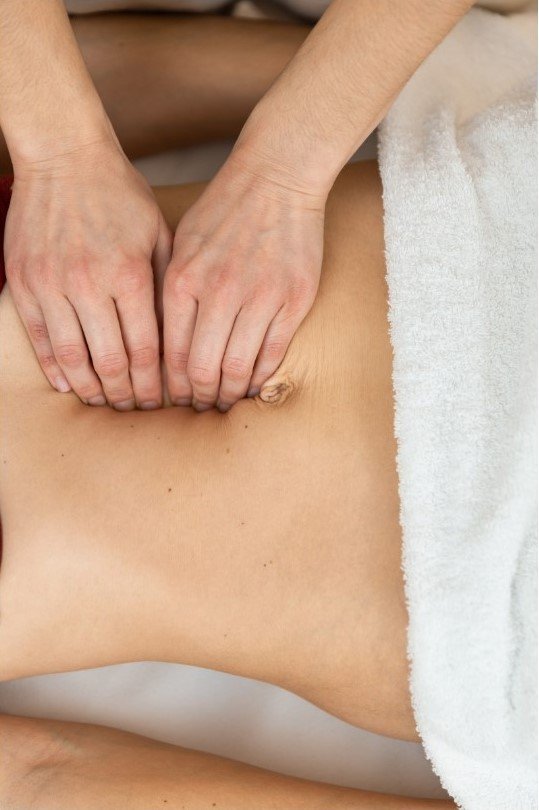What’s Happening with my abs?: Diastasis Recti Explained
I feel lately, the term “diastasis recti” has gotten more mainstream, which is cool but let’s dive down into what it actually is and what you can do about it.
Diastasis Recti is the thinning and widening of the connective tissue that sits between the two muscle bellies of the rectus abdominus (6-pack ab muscle). Statistically, if you’ve been pregnant, you’ve developed one, as research reports prevalence ranging from 66%-100% of pregnant women.
While pregnant, you may have noticed a coning or doming appearance along with middle of your abdomen. Once postpartum, you may notice a coning or doming appearance or you may observe an indent along the midline of your abdominals and more tissue on each side of the midline. The change in the midline, is prime evidence of having diastasis recti.
You can self assess for a diastasis recti, but honestly, it might be easier to have someone assess for you. To assess for diastasis recti, lay on your back and bend your knees. Take two fingers (typically index and middle finger) and press perpendicular the direction of your spine into your abdomen in 3 spots, right at your belly button, ~2" above and then ~2" below. When you press your fingers in the 1st spot, lift your head and shoulders up off the ground. If you feel muscle bellies bump into the outside of each finger or push your fingers out as there isn’t enough space for 2 fingers to be there, that is what we hope to find to rule out diastasis recti. You need to check all 3 locations though as you can have separation in 1 or all locations.
Besides width, you also need to assess depth. If you can push your fingers up to your 1st knuckle or more past where you feel the muscle tissue towards your spine, this is also considered a diastasis recti.
Once you’ve been assessed for a diastasis recti, here are ideas to start helping yourself heal.
See a trained pelvic floor therapist
Use kinesiotape to help engage the abdominal muscles and remind them how to fire appropriately
Work on breath mechanics. And not just laying on your back and breathing. Learn how to get breath into your sides and back to help decrease the amount of forward force being pushed towards your diastasis recti.
Posture. Stand up right now and assess where your ribs are in comparison to your pelvis. It’s likely you will find your shoulders and ribs are further back than your hips. Bring your shoulders and rib cage forward and stack over your pelvis.
Incorporate gentle rotational activities throughout your trunk and rib cage (even just walking with a more exaggerated arm swing to encourage trunk rotation)
This is a big one and often missed in most diastasis recti recovery: lean to find length throughout your back muscles and connective tissue! Think about it, during pregnancy, as the baby is growing and pulling your center of gravity forward, this is creating a posture that encourages short, tight back muscles and is pulling taut the connective tissue that wraps around the back. If you don’t help your body relearn how to lengthen these tissues you will constantly be fighting yourself.
From my 9 years as a PT, I think the hardest thing for clients to accept is the timeline to “heal” or “correct” their diastasis recti. Connective tissue, which as we discussed at the beginning of the blog, takes longer to remodel than muscle tissue. Muscle tissue usually starts to change and remodel in 6weeks. Connective tissue usually takes longer. The exact timeline is unknown as researchers know that genetics plays a role in connective tissue remodeling more so than muscle tissue. So, give yourself some time and space to work on improving your diastasis recti. As you start incorporating active abdominal exercises and breathwork, the muscles will help pull the gap together when engaged likely faster than when you are in a resting tone. That’s totally ok 😀
If you found this post helpful, please comment and share with others as I love educating the community!
Keep following along for tips, trick, and pelvic floor tidbits.

